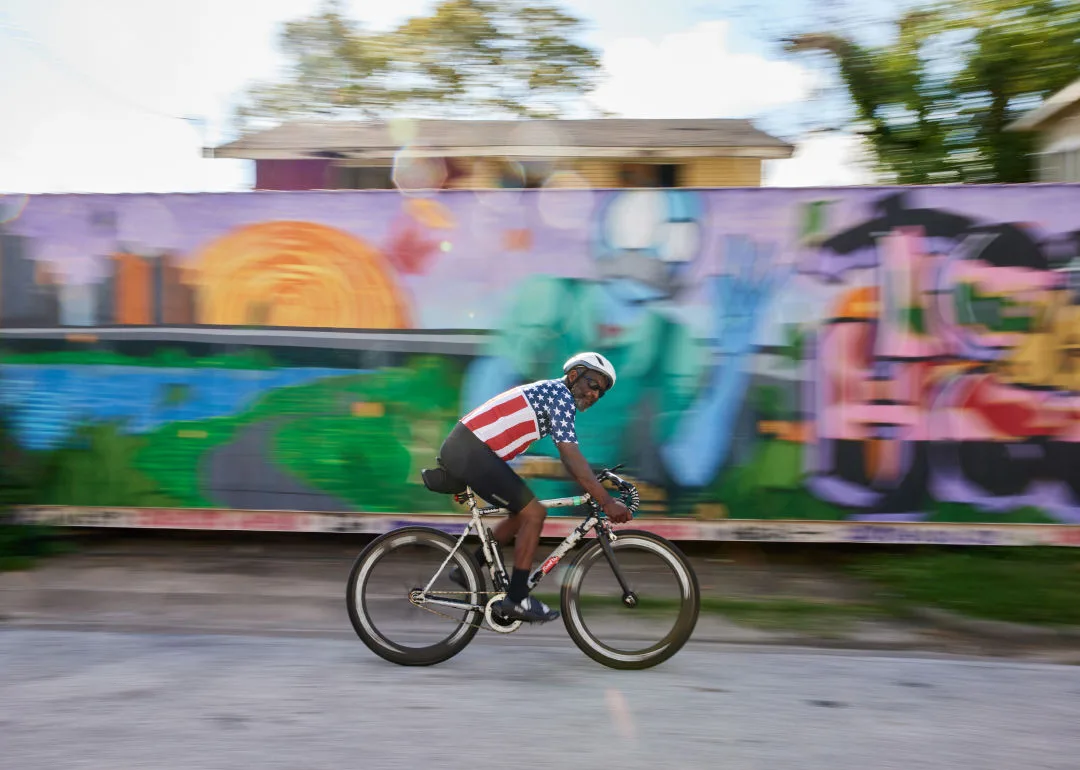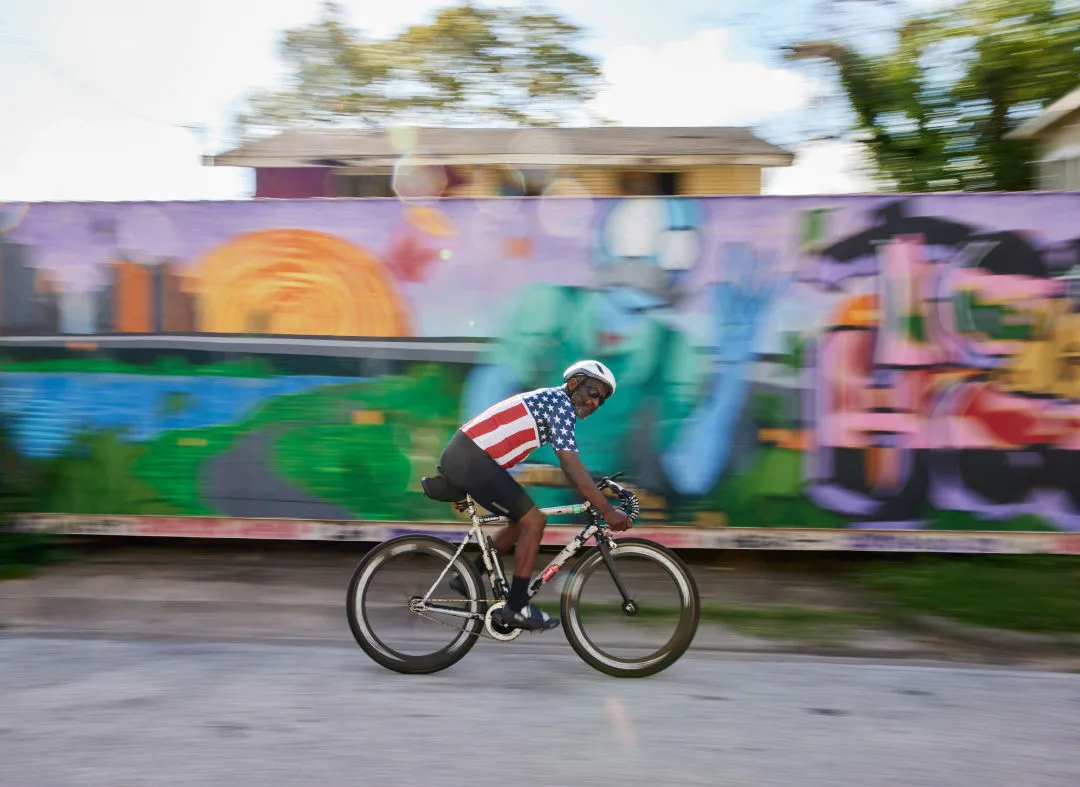
On a steamy September evening, Veon McReynolds hops on his bike and pedals out of the Tour de Hood compound in Third Ward, leading a group of riders behind him. His bike’s multicolored lights shine brighter as the sun sinks into the sky.
“You can ride, too!” he shouts, inviting a woman getting out of her car and walking toward a restaurant. She shakes her head, laughs, and smiles over at McReynolds. He keeps pedaling faster down Almeda Road.
McReynolds founded Tour de Hood, an organization that leads weekly bike rides through Third Ward and other parts of Houston, in 2003. Besides being an avid cyclist, he’s been a resident of Third Ward since the late 1980s, when he took a teaching job at Texas Southern University. His bike rides through the historically Black neighborhood draw an eclectic mix.
“All kinds of people, from gangsters to the homeless to rich. We’ve had multimillionaires ride. The president of TSU. The mayor of Houston. Many council members. It’s been something that will bring a lot of different people together. That’s the thing about cycling,” McReynolds says.
The 72-year-old is passionate about the neighborhood he’s remained in, living within one mile of TSU for more than three decades. McReynolds has seen his corner of Houston change dramatically. Stores closing. Small businesses shutting down. Longtime residents moving away. He wonders, will the neighborhood continue to hold onto its history as it evolves?
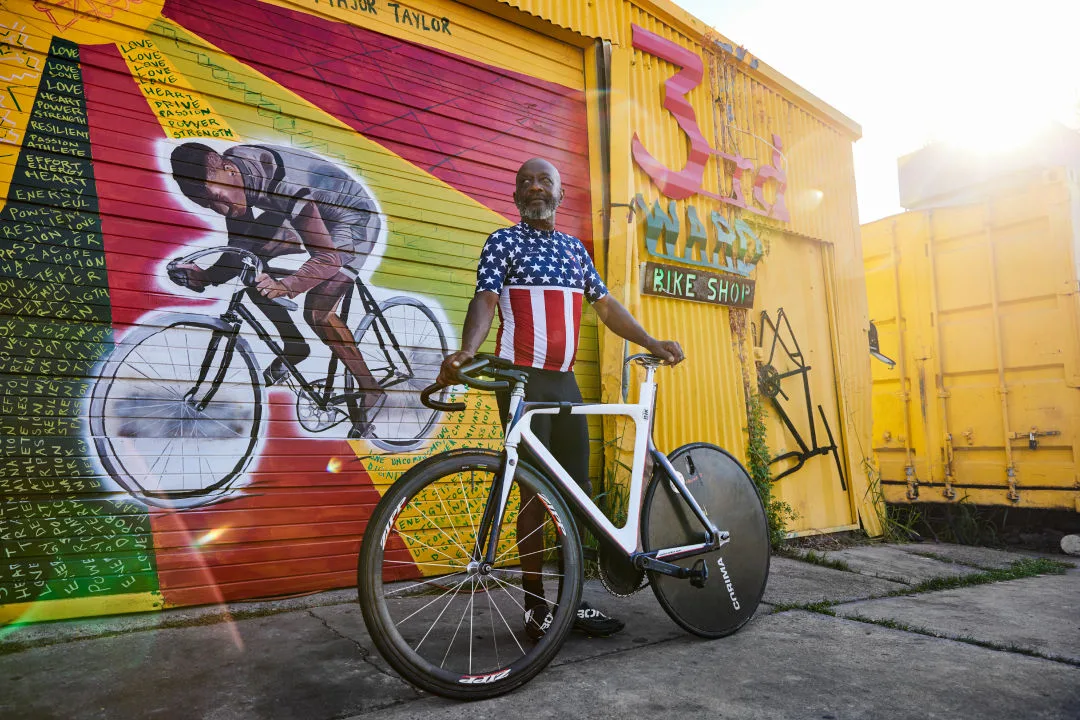
McReynolds isn’t the only Third Ward resident concerned about the neighborhood’s changes. Nearly a third of residents reported worrying about having to move within the next year, according to a 2019 survey from Rice University’s Baker Institute for Public Policy, and 40 percent of those surveyed said the construction of new townhomes was also an “extreme” concern.
Despite the neighborhood’s transformation, Lucille’s chef and owner Chris Williams, whose hospitality group acts as the managing operator of the restored historic Eldorado Ballroom, says Third Ward remains a cultural touchstone for the city.
“It’s the heart, the flavor of Houston. That’s the cultural center of Houston,” Williams says. “The creativity. The culture. It’s a different vibe. It’s a different city inside the city.”
“You try to fight.”
McReynolds grew up in Akron, Ohio, with parents who were rubber workers and domestic servants. When the rubber industry began its decline, his family moved to a small town in Kentucky. In his late teenage years, he started shoplifting from Indiana to Tennessee with a small group of people. At 20, he broke into a hospital warehouse and stole drugs. He was caught by police, arrested, and sentenced to two years in prison.
While in prison, McReynolds began reading voraciously, including books by Angela Davis and Malcolm X. He also took a course in psychology and eventually got transferred to a minimum-security prison. There, through a rehabilitation program, he was able to earn a degree in psychology from the University of Kentucky.
He continued his education at the University of Texas at Austin in 1979, spending eight years getting his PhD in community psychology. While living in Austin, his interest in activism began. He became president of the Black Graduate Student Association. McReynolds also worked with the neighborhood across from UT Austin to fight encroachment from the university and organized other communities in the area to stop gentrification. He learned early on that fighting against powerful institutions can be arduous.
“If you go there now, and you look, you would say it was a lost battle,” McReynolds says. “The thing is that people don’t understand, even here, you try to fight the city—the city is an entity, and it fights against human beings that die, or get sick, or move away. You’re fighting an institution, and it’s a different fight.”
After getting his degree in Austin, he landed a job teaching courses in psychology, statistics, and research at Texas Southern University in 1989 after his friend sent in the application for him. McReynolds viewed himself more as an activist than a teacher, but he soon fell in love with educating his students.
He says his class was ahead of its time. He had a camera, microphone, projector, and computer, and would often use the camera to project the students’ faces onto the screen when they asked a question in class. His activism bled into his teaching. He and his students worked with community members to preserve Allen Parkway Village, a historic housing complex in Fourth Ward. In Third Ward, they worked on projects in Alabama Gardens, the oldest community garden in Houston.
During McReynolds’s early years in Third Ward, the neighborhood looked vastly different. The Sears and Fiesta were thriving. Several Black-owned businesses dotted the neighborhood. However, as the years passed, the area began to shift. Yates High School and Ryan Middle School were starting to struggle. His daughter was a student at Ryan, but her mother eventually sent her out of state to live with her grandmother because of the school’s low performance. Both of his sons also went to schools outside of Third Ward, and he watched other parents do the same with their kids.
When Ryan Middle School opened in 1958, it served as an educational resource for the community, nurturing many future business professionals, lawyers, ministers, and educators. As years passed the school declined, and by 2008 it was one of the lowest-performing schools in Houston ISD. The school board voted to close the school in 2013 despite outcries from the community and the NAACP.
Yates High School, which opened in February 1926, was the second school established for children of color in the city. It’s named after the Reverend Jack Yates, who had been enslaved before becoming a prominent leader in the community. The school started as a revered institution for Black children but by 2007 had been named a “dropout factory” in a national report from Johns Hopkins. Currently, Yates is ranked 34th out of 45 high schools in Houston ISD, according to US News & World Report.
“That’s one of the ways you kill a community is you kill the education, so that the people [who] are thinking won’t send their kids to the schools. If they’re really concerned about their kid, they’ll move away to better school districts. That’s one of the ways you can kill a neighborhood by putting a stranglehold on the schools,” McReynolds says.
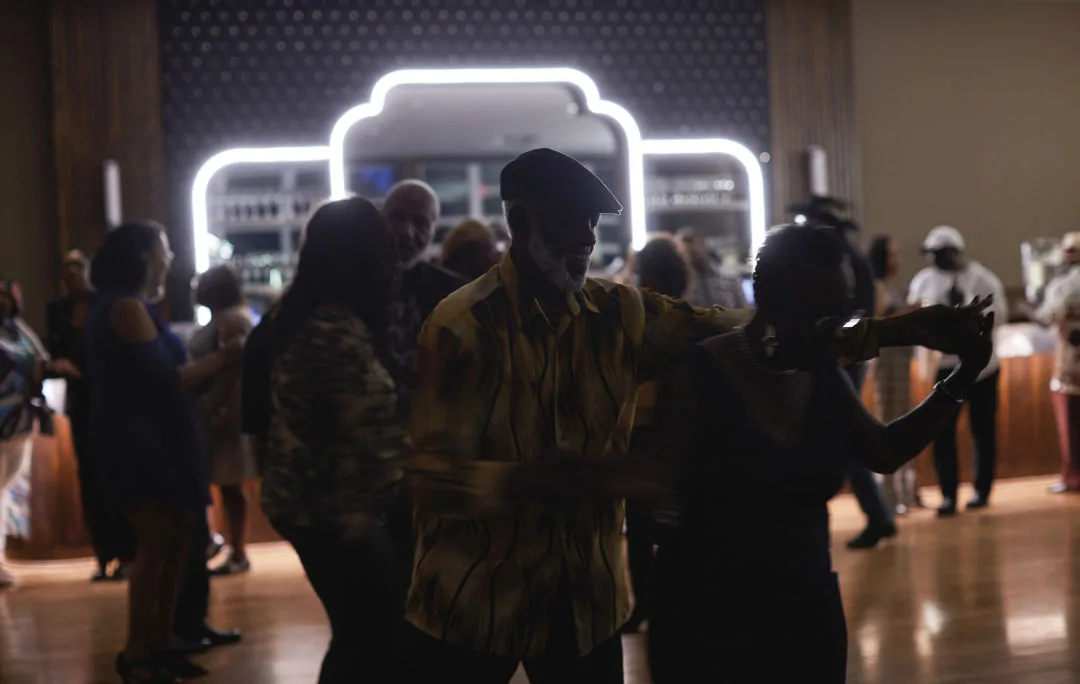
“Home of Happy Feet”
Third Ward became a subdivision of the city shortly after Houston’s founding in 1836. At one point, it was considered part of downtown. Today, I-45, Almeda Road, Old Spanish Trail, and Griggs Road mark the neighborhood’s boundaries.
In 1872, Emancipation Park was purchased by a group of formerly enslaved people and became a cultural hub where residents would celebrate Juneteenth. In its early years, the community was evenly made up of white and Black residents. However, by the 1930s, the neighborhood’s population had transformed to mostly Black residents, and it soon became the center of the civil rights movement in Houston.
Texas Southern University was established in 1947 as an institution to serve African Americans. On March 4, 1960, a group of students from the university decided to sit in peacefully at a “whites only” counter at Weingarten’s grocery store on Almeda. It was Houston’s first sit-in and would lead to businesses across the city desegregating. Other organizations keen on activism, such as Shape Community Center, the NAACP Houston Branch, and the Houston Area Urban League, also were birthed in Third Ward.
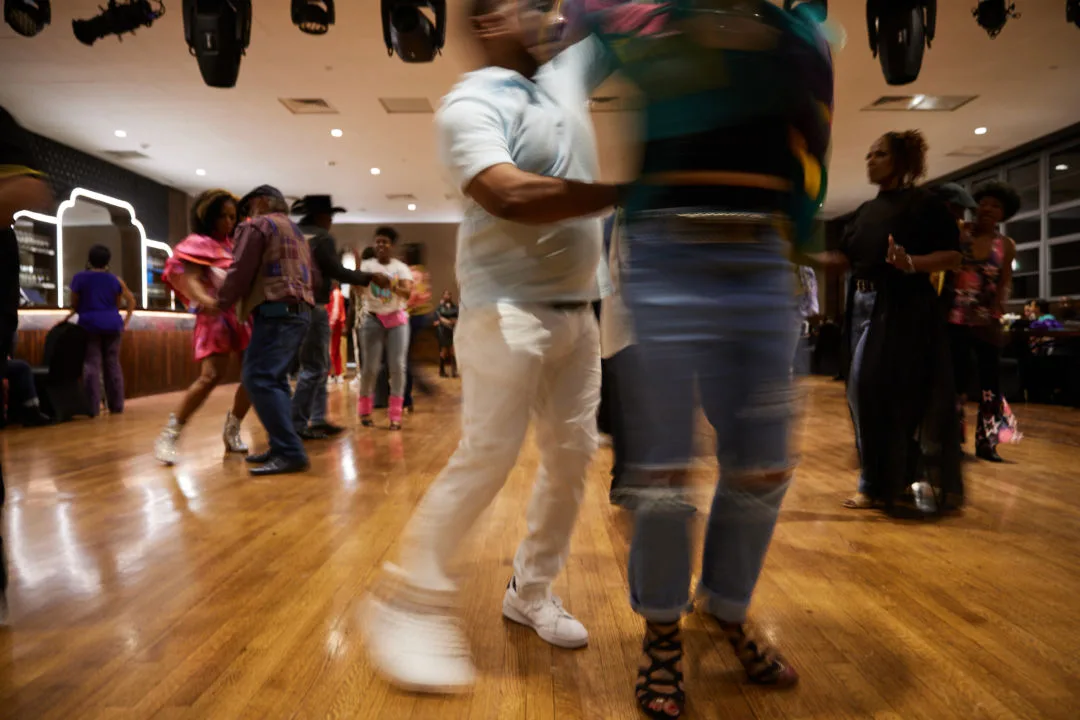
Activism wasn’t the only thing brewing. Starting in 1939, Third Ward’s Eldorado Ballroom became the place to see upscale jazz and blues performances. The ballroom was known as the “Home of Happy Feet,” according to the Texas State Historical Association, similar to the famous Savoy Ballroom in Harlem, because of the crowded dance floor. Big-time celebrities such as Etta James, Ray Charles, and Jimmy Reed performed at the Eldorado. Desegregation of Houston’s businesses, changing music tastes, and lack of parking space eventually led to the venue’s demise by 1970.
“When we on your side of town”
On a Saturday morning in August at the Rado Market, inside the restored Eldorado Ballroom, a group of ladies gather for a birthday brunch. A man grabs a coffee, then gets busy typing away on his computer.
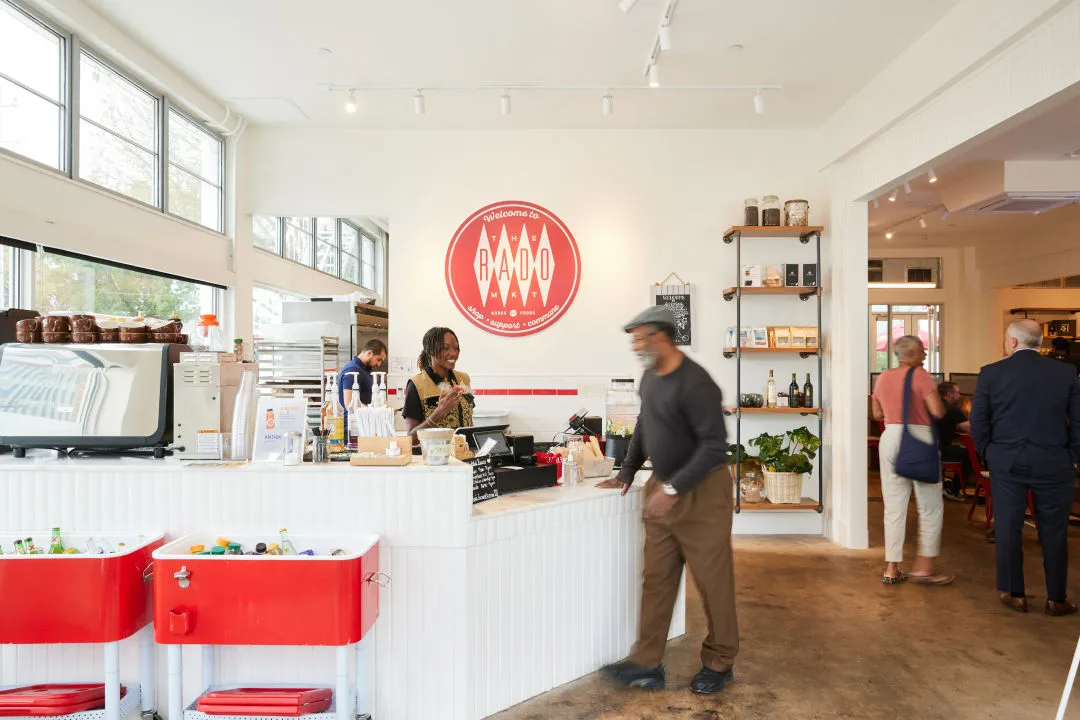
“When we walk in that ballroom, we’re literally walking on the floors and speaking into the walls that the masters spoke into. They’ve been here,” says Williams, of the celebrated Southern cuisine restaurant Lucille’s.
Williams has opened this new, all-day market, named for the locals’ nickname for the ballroom, on the first floor. It’s located right across the street from Emancipation Park, and Williams hopes the spaces can collaborate with one another. For example, visitors to the Rado Market can purchase a picnic basket to take over to Emancipation.
Danielle Burns Wilson, the curator and art director at Project Row Houses, which took over ownership of the Eldorado in 1999, says the conversation to revamp the ballroom began over wanting to put an elevator in the building. This transformed into a nearly $10 million fundraising effort to fully restore the entire space. It reopened to the public in March 2023.
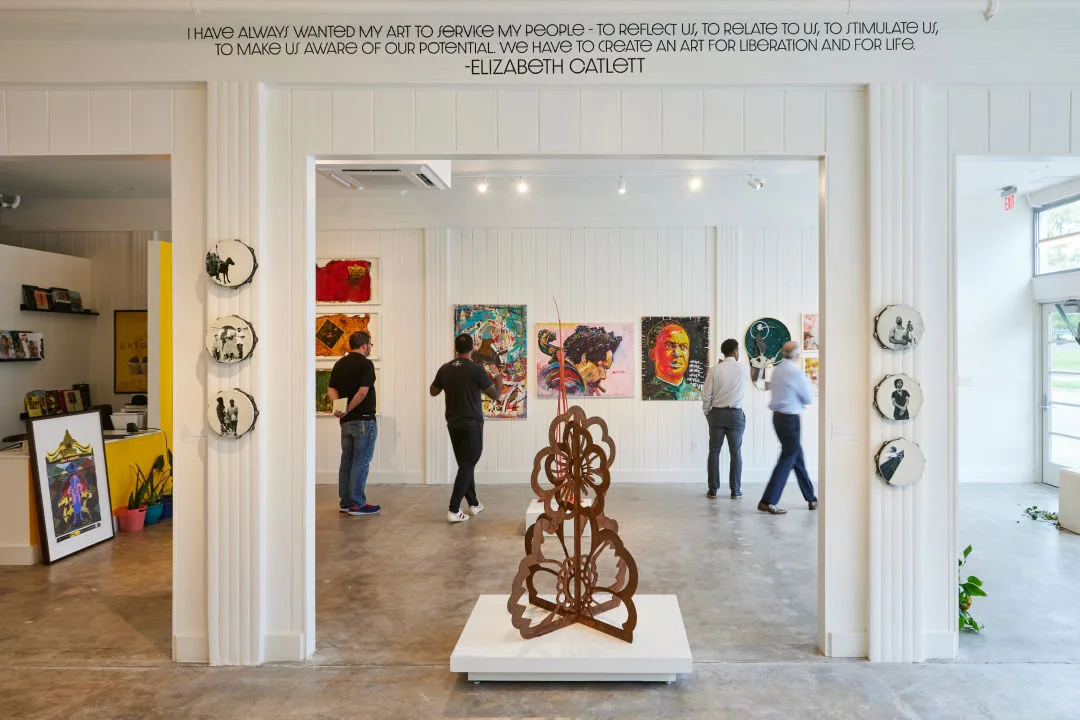
“We’re definitely interested in what we call creative placekeeping, because oftentimes people are talking about making a space something, but the space is already made. The history is already there. The stories. It’s really about keeping the community engaged. What we would like to see is just the activation of having community back, people actually celebrating those milestones in the Eldorado Ballroom that they used to,” Burns Wilson says.
Williams also has big visions for the space. The ballroom is already hosting gospel brunch on Sundays through radio station KTSU. He hopes it will become a hub for musicians all over the world, as it was for earlier generations.
“The response has been overwhelmingly positive. People love the mission. They love the look and feel. They love the experience of walking up in here. The flip side: It’s been dormant for so long. You have to constantly figure out ways to remind them and get the word out,” Williams says.
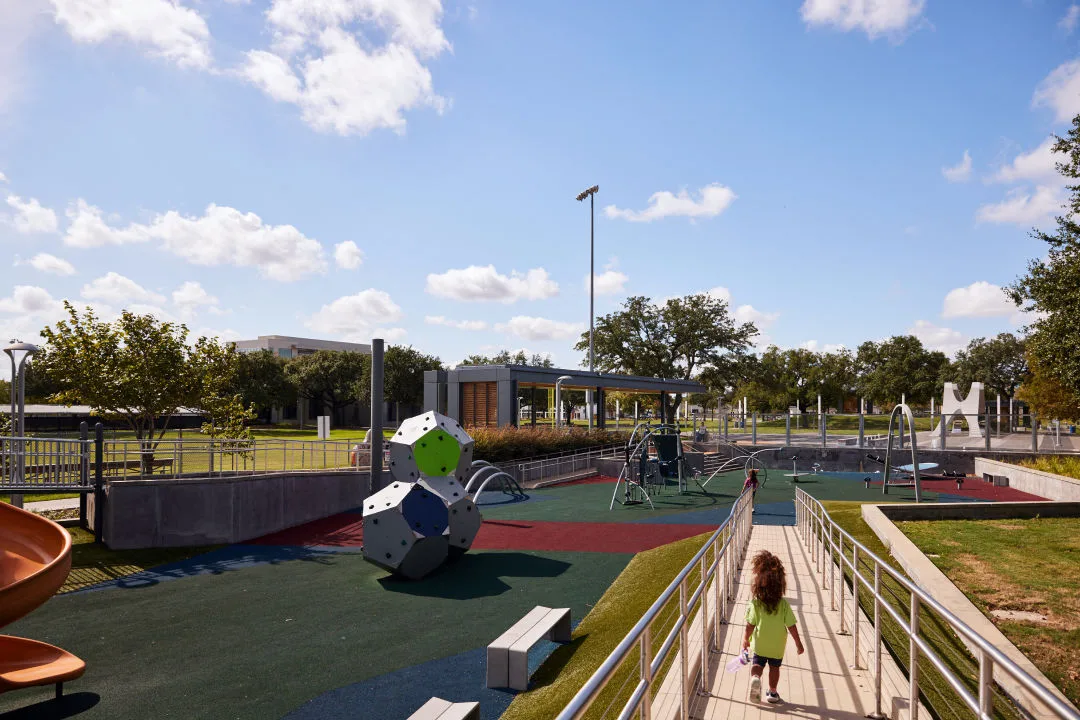
Eldorado Ballroom is just one example of a historical space in Third Ward seeing a resurgence. Nearby, Emancipation Park is also experiencing a revival, ever since the park underwent a $33 million renovation in 2017. Juneteenth celebrations have gotten grander. In the spring of 2023, the park hosted Jazzy Sundays, a free concert series made possible by a grant through the Kinder Foundation. Performers have included Houston native and Grammy Award–winning artist Robert Glasper.
Burns Wilson says programs through Project Row Houses that ensure neighborhood development and enrichment are keys to preserving the history of Third Ward as the community changes. The organization, founded in 1993 by seven artists, seeks to be a refuge for artists, preserve history and culture, and provide valuable resources to residents.
“The way that we really combat gentrification is to make sure that those legacy residents stay in Third Ward,” Burns Wilson says.
She likens it to a song by hip-hop artist Goodie Mob, “Fly Away.”
When we on your side of town we don’t ask why
We abide by the rules that y’all live by
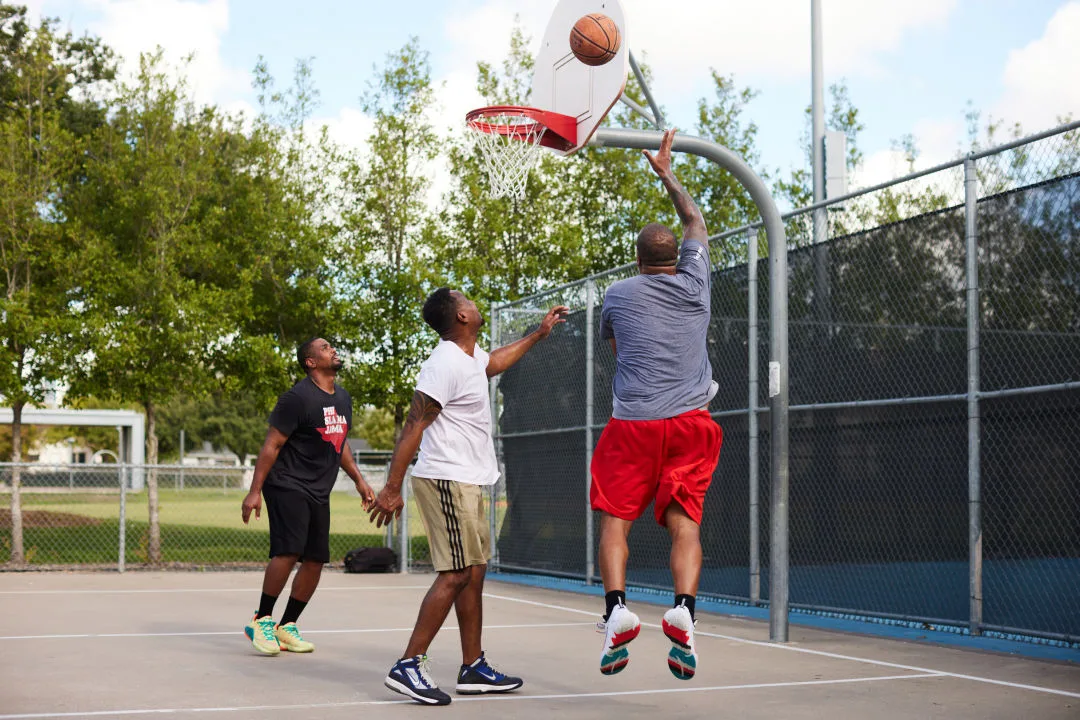
“It’s fine if you want to come, but if you’re coming to disrespect what’s already there, that’s when we have a problem with it,” Burns Wilson says. “Continuing to have affordable housing in Third Ward and making that available. Continuing to commission artists to do public artwork that reflects the neighborhood. We continue to have those programs within the neighborhood that really help the residents. All of those types of things make people that are already there feel like they’re supposed to be there.”
“Rollin’! Rollin’!”
McReynolds can pinpoint the moment when Third Ward began to shift. About 10 years after he moved to the neighborhood, he noticed longtime residents leaving.
“The people that were here when I came, they were aging out. So, maybe there were people when I came in their 60s or 70s,” McReynolds says. “Then, within 10 years, they’re in their 80s. They start to sell or their kids take over.”
That’s when others from outside of Third Ward came in and began buying property in the neighborhood, he says.
A majority of residents who participated in the 2019 Rice University survey were “extremely” concerned about the loss of African American culture in the neighborhood. Many cited rising rental rates as to why they might have to move out of the community. However, many residents aren’t leaving. Most surveyed had lived in the neighborhood for more than 15 years and had no desire to move.
McReynolds says he gets offers constantly to sell his property where Tour de Hood is housed on Wheeler Avenue. He declines. Instead, he’s holding tight to the neighborhood’s culture through his bike-riding program. His interest in cycling began in grad school, when he started becoming more conscious about his health and riding his bike back and forth to school.
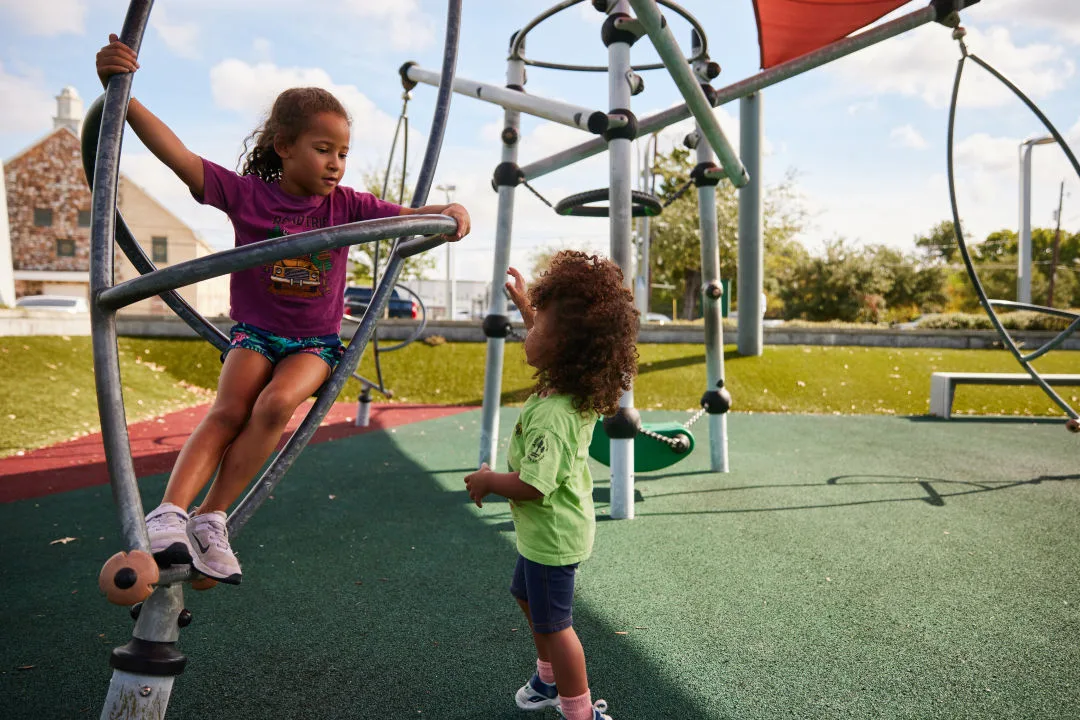
His love for cycling stuck around. When his kids were younger, he would ride bikes with them around the neighborhood. McReynolds also began riding with a group of cycling enthusiasts. On Sunday mornings, they would go down Cullen Boulevard to the Pearland area, and call it Tour de Hood—a play on Tour de France. He also rode with other people in the community and bought bikes for those who didn’t have them.
His rides have continued for 20 years since the nonprofit was originally founded. He says they give outsiders a glimpse into the neighborhood. At a Black history ride last February, 100 people showed up.
“It’s gotten many people into the mindset that they can do it,” McReynolds says. “A lot of people have gone on to buy bikes and start riding on their own.”
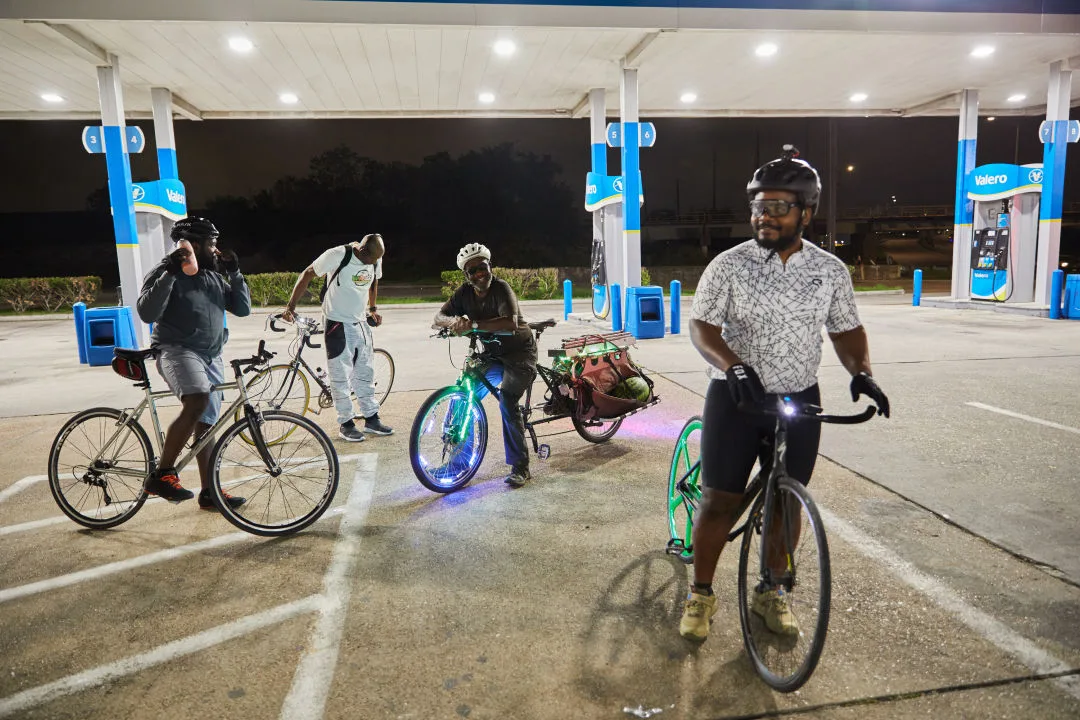
On one of the cooler nights in September, Tour de Hood riders gather at a gas station for a rest break. The group rides together every Wednesday night, and anyone is welcome. Some riders are seasoned. Others are younger, such as a girl who rides in a two-seater bike with her dad.
“You always find the best watermelon slices,” one of the riders tells McReynolds, who unpacks a large melon and begins cutting it up. Riders walk over one by one and pick up a slice to snack on. They discuss an upcoming ride to Brazos Bend State Park, where they plan to camp overnight. Residents sometimes honk their car horn or shout, “Be safe!” as the group passes by on their bikes.
At a stoplight, McReynolds often shouts, “Rollin’! Rollin’!” to encourage riders to move through when the road is clear.
“Maintaining the spirit”
Williams recently bought a house in Third Ward. Even though some people have moved away from the neighborhood, he sees a different story playing out.
“The old narrative is everybody from Third Ward has been chased out. They sold their businesses,” Williams says. “These people are in here. They’ve kept their property. They’re the ambassadors of the history of this place. Especially where I just moved. It’s nothing but people from the neighborhood that are maintaining the spirit of it, telling the story of it, protecting it.”
Still, the population demographics in Third Ward are changing. African Americans now only make up about 45 percent of the neighborhood, down significantly from 71 percent in 2010, according to the most recent US Census data. The white population in the neighborhood has nearly tripled, from 1,283 residents to 3,645 in 2020. This comes as the white population in Houston dropped 30 percent over the same decade.
Home prices have also steadily increased in the neighborhood. The average price of a home in Third Ward today is around $400,000, according to Redfin. However, affordable housing units are still being built in the community. A new apartment complex for low-income seniors, the Citadel on Elgin, opened in 2023. A new affordable housing unit by New Hope Housing is also expected to open in Third Ward in 2025, with rents ranging from $800 to $1,260.
McReynolds says you can look at other parts of Houston to know what Third Ward could transform into. Fourth Ward, also known as Freedmen’s Town and the city’s oldest African American neighborhood, has undergone significant transformation, with new townhomes and trendy restaurants surrounding the area’s historic core.

“I used to ride my bike through Fourth Ward all the time. I go down to Fourth Ward now, and I’m like, ‘Where in the hell am I?’ If you want to know what it’s going to look like, you can go down to Fourth Ward,” McReynolds says.
Despite the rapid change in Third Ward, the community spirit is strong. The percentage of residents who participate in a neighborhood association, resident council, or civic group exceeds national trends, according to the Baker Institute survey. Residents also show a strong collective efficacy, which measures an individual’s willingness to help somebody else in times of need.
“We can preserve it”
Black excellence. Dignity. Liberation. Friendly. Fun. Black future.
When Burns Wilson of Project Row Houses thinks of Third Ward, those are some of the words that come to mind. She thinks the history and legacy of the neighborhood can be preserved, as long as programs remain that help residents in the community.
Chef Williams agrees. Growing up in southwest Houston, he always admired the neighborhood. “I hope we can preserve it. I pray that we can preserve it,” he says.
On the Tour de Hood bike ride, McReynolds and the other cyclists wind their way through the Texas Medical Center’s sleek buildings, a mostly empty and dark Hermann Park, and then down Montrose Boulevard past luxury apartment buildings and a smattering of restaurants.
Finally, the riders are back home in Third Ward, making their way closer to Wheeler Avenue and the Tour de Hood compound.
Twenty miles later and 15 minutes early.
McReynolds’s smile is wide as the ride comes to a close.
Discover More of Third Ward
A snapshot of new and newish BIPOC-owned businesses.
Crumbville, TX: Baker Ella Russell has delighted locals with her sweet treats since 2016, and her shop also recently became the home of Serious Sounds after the longtime record store closed.
Doshi House: Located in a 1930s corner building with a serene patio, this 10-year-old spot is a neighborhood go-to for vegan food, coffee, and community.
Green Seed Vegan: You won’t regret ordering a jackfruit barbecue sandwich and a raw juice at this counter-service mainstay, a celebration of all things plant-based since 2012.
Kindred Stories: Opened in 2021, this bookstore focuses on works by Black authors and has a robust event calendar, hosting literary powerhouses like Roxane Gay and Bryan Washington.
Our Little Red One Shop: This metaphysical shop, in the neighborhood since 2017, is the place to go for crystals, sage, candles, oils made in-house, and tarot readings.
The Savoy: The owners of the famous Turkey Leg Hut opened this icehouse-style bar in 2021, offering cocktails, weekend brunch, and a good vibe.


